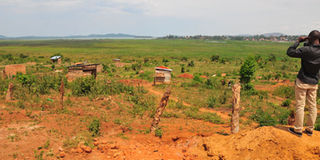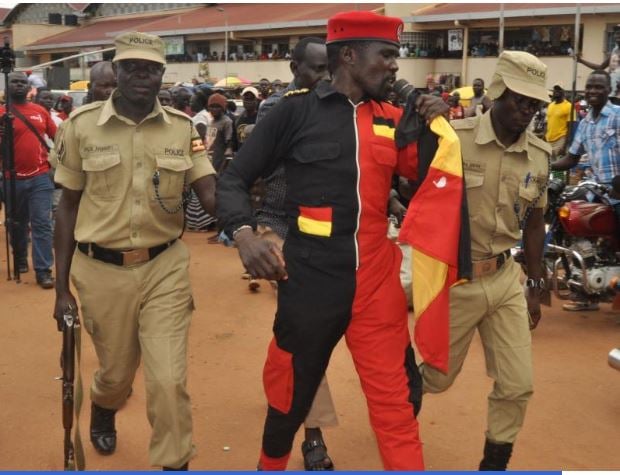Understanding ‘Kabaka’s’ land and private mailo

By 1966, mailo land accounted for over 50 per cent of the country’s revenue and Luweero triangle alone
What you need to know:
“Is the land you are selling “Kabaka’s” land or mailo?” This is one of the most common questions asked by many a potential buyer before entering a land transaction. Thus it has been deduced by most Ugandans especially in central Uganda, that land, is either “Kabaka’s” land or mailo. How true is this
Buying land does not have to be hard, especially if you have money. All you need is to know the type of land you are buying and the person from whom you are buying it.
“Is the land you are selling “Kabaka’s” land or mailo?” This is one of the most common questions asked by many a potential buyer before entering a land transaction. Thus it has been deduced by most Ugandans especially in central Uganda, that land, is either “Kabaka’s” land or mailo. How true is this?
“Kabaka’s land”
Peter Walubiri, a lawyer, says “Kabaka’s land” (bibanjja) is a phrase that is not rooted in the law but was probably coined because the land referred to belongs to the office of the Kabaka of Buganda.
He explains that Kabaka’s land is also mailo land, the difference being that his is official mailo; he owns it by virtue of his office. “During the 1900 Buganda Agreement, all land in Buganda was divided into two; crown land, which was under the control of the colonial government, and mailo land.
This mailo land was also divided into two; there was land that was given to office holders and the other given to private individuals. The beneficiaries, by virtue of their offices included the Kabaka, who was given 350 square miles and the ssaza chiefs who got eight square miles, among others,” he explains,
“This land was not yours as an individual. It would be transferred to the next office holder. It was meant to cater for the office bearer. So the 350 square miles that was given to the Kabaka is the land that is today popularly referred to as “Kabaka’s land”. Therefore, Kabaka’s land is also mailo except that it is official mailo.”
The 350 square miles is the land that is currently managed by the Buganda Land Board. This land is predominately found in suburbs such as Nansana, Munyonyo, Buziga, Konge, Kigo, Maganjo, Kagoma, and Ganda, among others. He notes that the land was called mailo because it was divided in miles which in Luganda is “mailo”
Mailo land
Denis Bugaya, a legal officer at Buganda Land Board (BLB), says that private mailo (plot) is the land which was parcelled out to individuals in the sense that it was their personal property.
“People such as Kabaka Daudi Chwa, his mother, the Muhamedian prince, who was Mbogo and the mother of Mwanga, were given land as individuals. They could deal with this land as they deemed fit; they could transfer it, or if one got a financial problem or any other, they could sell it.
It is through this selling that you would find say a Mukiibi, who is not a royal, owning land that once belonged to the latter. The land that is owned by real estate companies was acquired through such transactions.” Bugaya offers.
Difference between the two
The legal officer says the salient difference between “kabaka’s land” and private mailo is that a buyer is only given a leasehold title for the Kabaka’s land while for private mailo one can get either a leasehold title or an outright transfer.
“One cannot buy and own the “Kabaka’s land”. The reason why we give leases on this land is because, if one is allowed to buy and own this land, it means that the next generation of the Kabakas will have nothing.
It has been many years since land in Buganda was parceled out but that given to the office of the Kabaka is still intact, it is still the 350 square miles because of the lease issuance policy. The maximum number of years for the lease is 49 years,” he states.
The other difference is that one has to pay premium and annual ground rent for Kabaka’s land, while for private mailo one only pays for premium. Abbey Ntambi the communications officer of Buganda Land Board (BLB) says premium is 10 per cent of the capital value of the land while ground rent is one per cent of the premium.
“If a plot, say in Buziga, costs Shs40m, that is its capital value. The premium is 10 per cent which translates into Shs4m while the ground rent is one per cent of Shs4m which is Shs400,000. In other words, for that plot in Buziga one pays premium once, and annual ground rent over the 49 years.”
Renewal of Kabaka land title
However, the legal officer replied to the worry about the lease extension; “In law when the lease expires, the land returns to the Kabaka’s ownership.
He determines whether to extend or not to. But it is the policy of BLB that once a lease expires, we renew it and give it to the sitting tenant.”
He adds, “This is a hybrid institution; it is commercial, cultural and political.
“Failure to extend the lease tarnishes the name of the Kabaka. You will also have frustrated someone’s developments on the land. The only circumstance under which we can hesitate to renew a lease is when the sitting tenant got the lease fraudulently.
When it is time for extending the lease, we first resolve that matter.” About ground rent being dear, Ntambi says it is a question of calculation.
“It is important to note that Kabaka’s land is cheaper compared to private mailo.
Where a plot of private mailo costs Shs400m, the same plot of “Kabaka’s land can cost Shs200m. When you add annual ground rent for 49 years to the Shs200m, what you get is still less than Shs400m.”
Merits of “Kabaka’s land”
Ntambi says the land does not have many wrangles like is the case with private mailo. “The landlord of the land is common knowledge. It is the Kabaka. Whereas for private mailo, the landlord maybe an absentee, which creates a gap for fraudsters to exploit, it is not the case with the Kabaka’s land. Besides, the land is managed on his behalf by the BLB.
So in case of any doubt, there is a known office to run to,” he concludes.
The analysis above settles the debate that there could be a tenure system called Kabaka’s land. The unsettled debate is the one about which of the two, is recommended. It is a matter of individual choice.
The other land
Crown land. This is the land which was controlled by the colonial administration after the 1900 Buganda agreement land division. It is the renowned 9,000 square miles or “mailo akenda” in Luganda.
This land was to be put under the kingdom’s control upon the attainment of independence by the country. Indeed that is what happened in 1962. The colonialists had preserved it for the Baganda in independent Uganda.
However when kingdoms were abolished in 1966, consequently the 1967 Constitution was to the effect that this land be transferred to Uganda Land Commission. Later, the 1995 Constitution and the 1998 Land Act transferred it to the District Land Boards.




